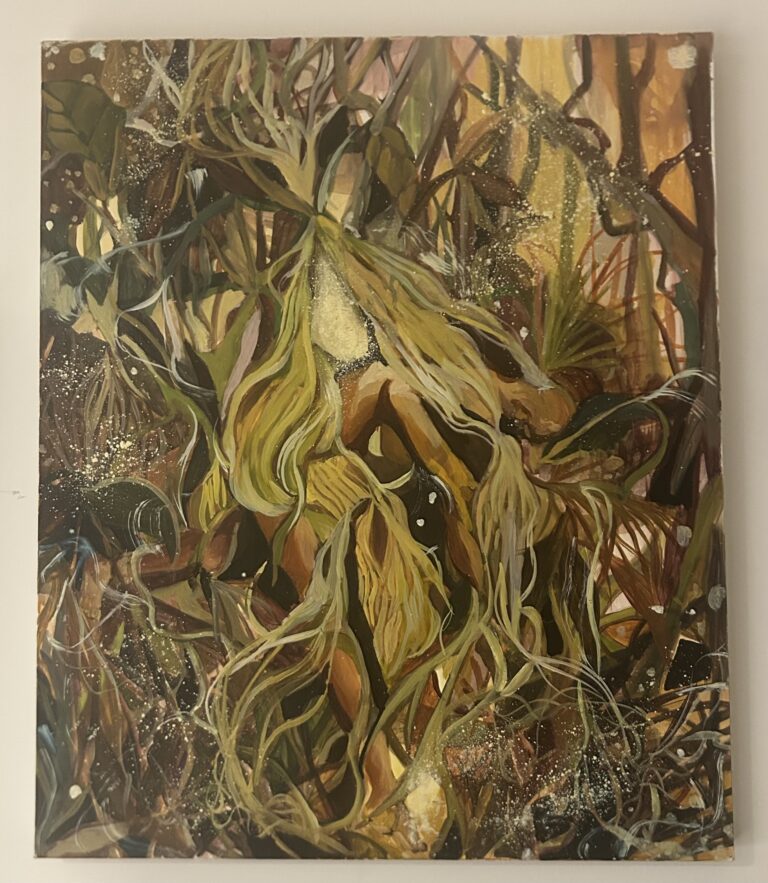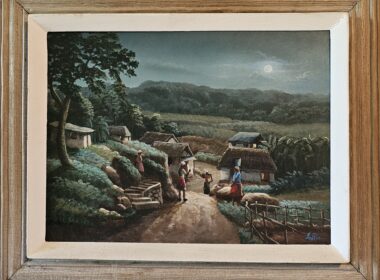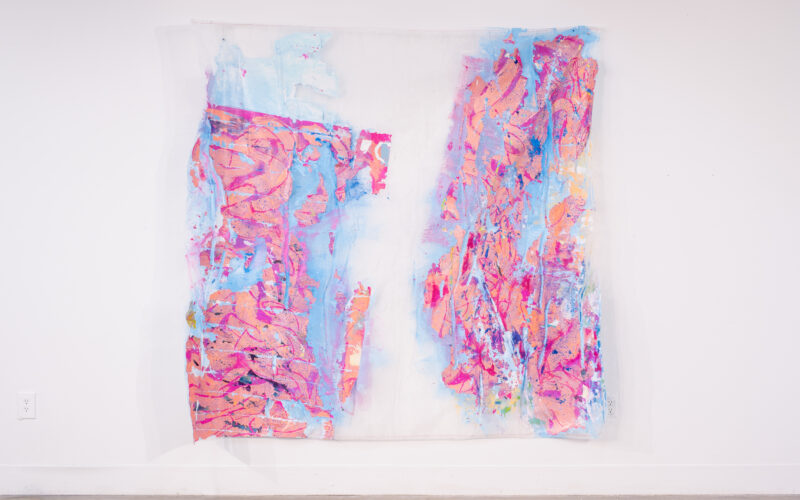The artists’ use of abstraction helps process and express how the world changes.
Above: Christopher Paul Jordan | Floating Row | 2023 | Acrylic on Frost Blanket.
Connecticut’s turbid skies and damp weather made the inside of NXTHVN’s house in New Haven more welcoming on its open studio day. The two-day open studio displayed artists Kwamé Gomez, Christopher Paul Jordan, Baris Gokturk, Patrick Henry, Kristy Hughes, Reeha Lim and Napoles Marty.
NXTHVN is a new national arts model that empowers artists and curators through education and access to a vibrant ecosystem, culminating in this final exhibition.
NXTHVN hosted people from Yale and beyond to experience its Cohort 06 Fellows’ handling of identity with abstract expressionism.
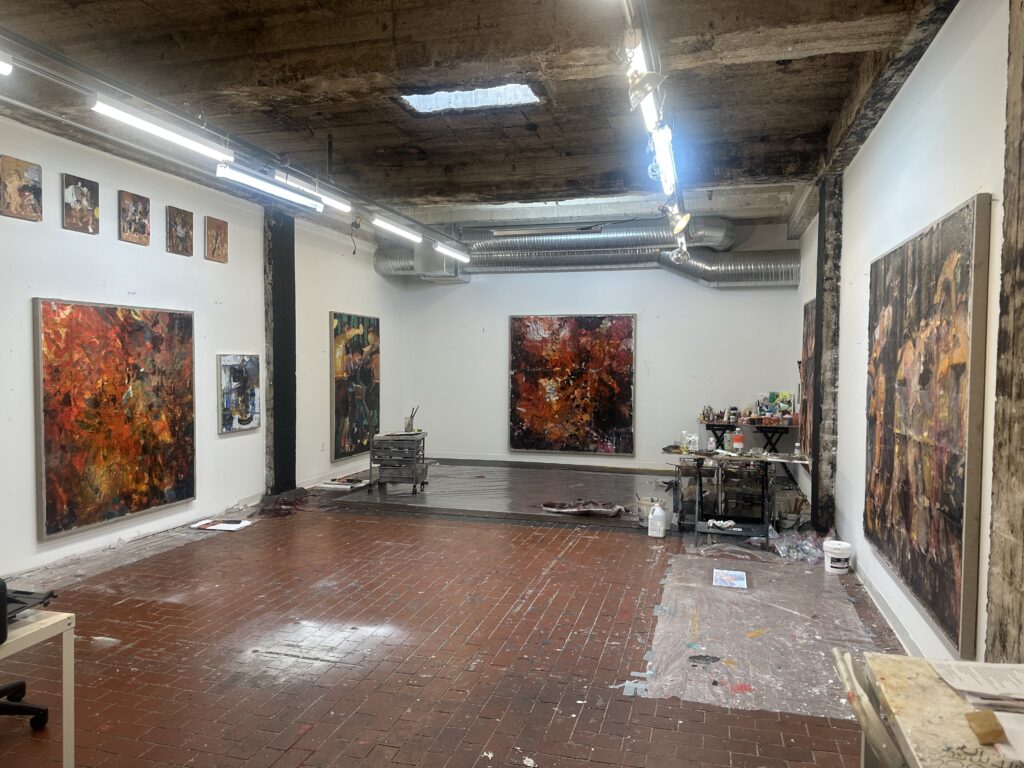
The open studio exemplifies NXTHVN’s collaborative model. The program helps accelerate artists’ careers by connecting them with experienced mentors and partners from different fields. The selected Cohort 06 artists earn a 10-month fellowship that combines a stipend, administrative support, a private workspace, and professional development sessions to accelerate their careers.
At NXTHVN, the fellows seemed to use abstract expressionism to reflect multidisciplinary inspirations and project how they internalize home with memories. Abstract expressionism is an American art form that became popular during the mid-20th century. It’s known between spontaneous expressions—artists like Jackson Pollock and Sam Gilliam— and contemplative expressions—artists like Mark Rothko and Frank Bowling.
Kwamé Gomez’s NXTHVN pieces externalize the stress and euphoria in movement. Inspired by her formative dance, dreams, and dystopian fiction, she uses abstract expressionism to propel ideas like self-love and divine connection. Hands, feet, limbs and silhouettes complement the kinetically layered pigments brushed across arms—spanning stretched canvases to express an emotional gamut.
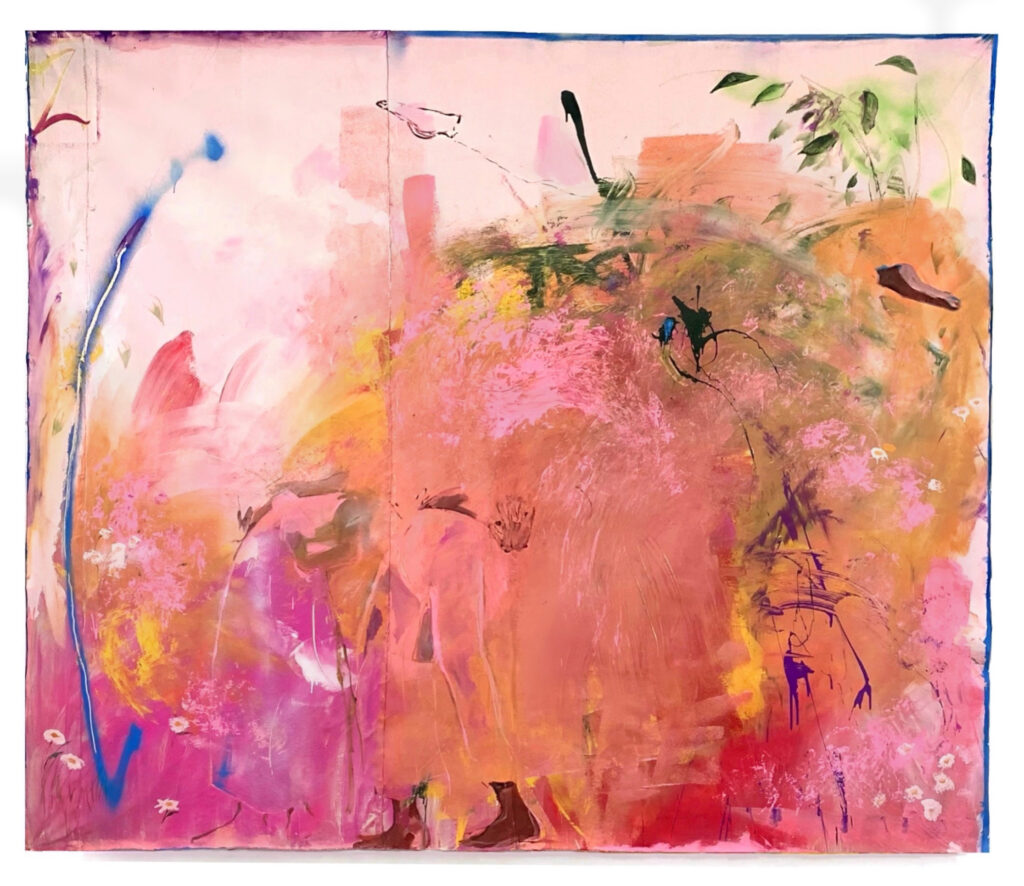
another day | 2025 |
Acrylic paint, oil, modeling paste and spray paint on canvas
“For an absolute fact, your dreams will save you,” Gomez said. “I’ve always had very vivid, main character, post-apocalyptic dreams. I feel like dreams are a way that I’m able to step into aspects of my identity that I don’t think that are often uplifted.
“For me, activating and listening to the parts of myself that feels like, oh, ‘I don’t feel okay right now,’ ‘I’m uncertain,’ ‘I don’t know how things are going to turn out,’ is like honoring a part of yourself that I think we’re not conditioned to.”
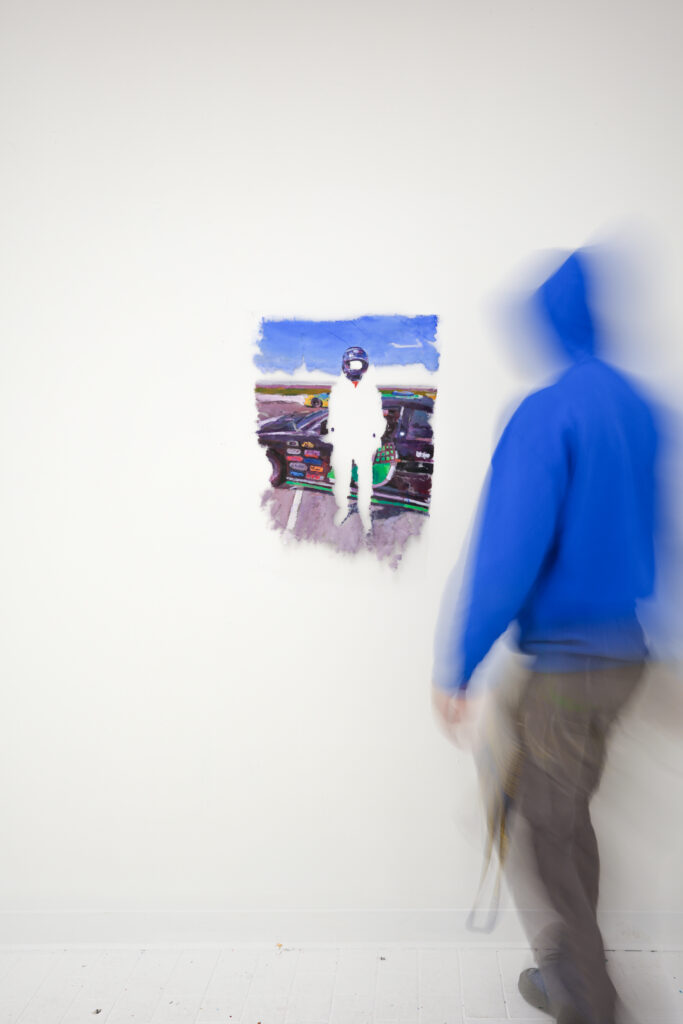
Gomez’s works are more akin to action paintings. Her kinetic brushstrokes and stream of conscious color applications display blooms of thoughts and ideas almost like synaesthesia—a phenomenon that causes multisensory overlaps. By developing art from her dreams and personal history, Gomez expresses an incomparable visual vocabulary, which speaks to a lineage of Black abstract expressionists.
Like Gomez, Christopher Paul Jordan’s work deals with dreams, although Jordan’s work is arguably more expressionist than abstract expressionist. His works are reliefs of finished paintings, which means he etches from sometimes complete paintings. The breadth of his work wrestles with the ephemerality of memory and embraces the scars acquired through the grieving process.
Beyond memories, Jordan deals with dreams. His painting, prodigal son, represents the realization of his childhood dream and captures how dreams put to rest are only realities deferred. Jordan is inspired by residue and aging in sculpture. Residues are a testament to the lives an object has lived and its environmental history. In the context of works being left behind, his work dances with diasporization.
“I could never comply with the sort of culture around a canvas that is masquerading as having no history, as an object that’s just a vessel for the artist’s narrative to be poured to,” Jordan said. “I’m drawn to this history of the surface, and that’s what compels me to paint.”
In his studio, facing a gap between paintings, Gokturk spoke with a patron about what inspired his paintings. Red tiles covered most of the floor except for a wall that held a piece like no other, Phoenix. Like his fellowship contemporaries, the layers in his pieces convey a temporal relationship, yet his relationship is with space.
Turkish-born Gokturk took inspiration from layers in depth of field in architecture. Structural significance and its absence after being destroyed display a throughline of presence, which Gokturk ties to fire. After transferring the image of fire with plastic, he rubs off the paper and reveals the ink that’s trapped in the residual glue.
“The fires become visible as it’s making something invisible, at the same time, destroying and regenerating,” Gokturk said. “The intention of the work is to free itself from your initial intentions to a certain degree and become their own.”
The process of creation and destruction mirror the source fires of his breadth: protests. The protests Gokturk mentions are from 2013, when thousands of people peacefully protested the demolition of Gezi Park, one of Istanbul’s historic green spaces. Today, protests in Turkey are against the arrest of Ekrem Imamoglu.
These artists’ pieces reflect on remembering things that have since changed and using their language to define the world they want. Their use of abstraction helps process and express how the world changes. Following the NXTHVN open Studio day in April, the James Cohan gallery in Manhattan will feature the six fellows for a group exhibit at its 291 Grand St. location from May 8-June 21, 2025.
